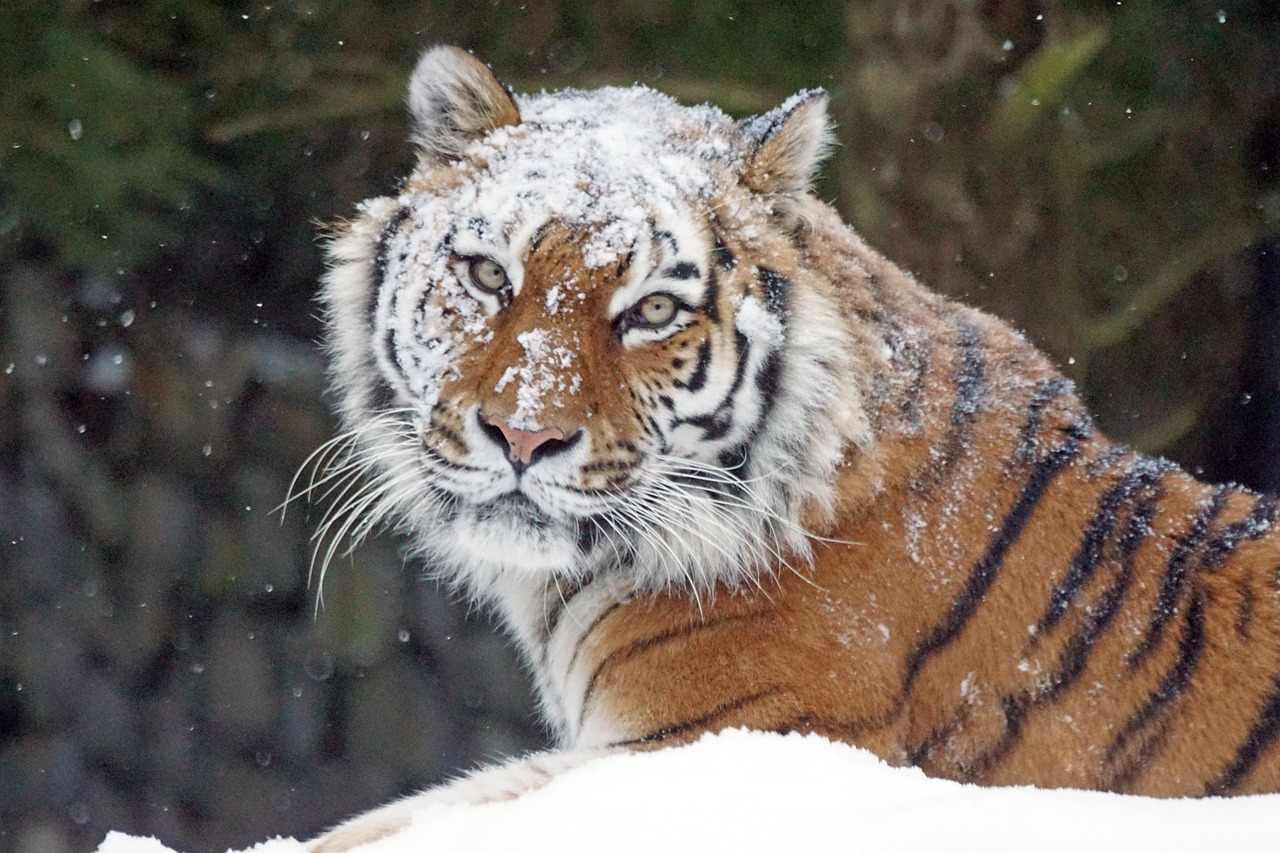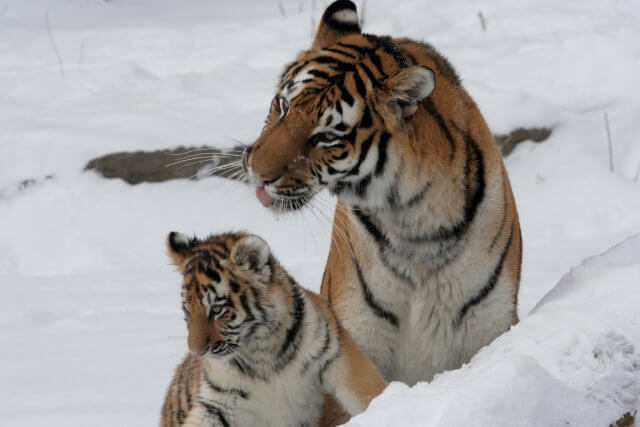Tigers Cold Weather: Fierce Tigers Brave the Cold: Unveiling Their Extraordinary Adaptation Skills
Tigers Cold Weather: How Do Tigers Cope with Cold Weather?
When we think of tigers, we often imagine them prowling through lush jungles or basking in the warm sun. However, tigers are incredibly adaptable creatures that can survive in a variety of environments, including cold weather. In this article, we will explore how tigers cope with cold weather and the fascinating adaptations that enable them to thrive in
chilly climates.
1. Natural Habitat of Tigers
Tigers are native to various parts of Asia, including Siberia, Russia, and parts of China. These regions experience extremely cold temperatures during the winter months, with temperatures dropping well below freezing. Tigers have evolved to inhabit these cold climates and have developed unique characteristics to cope with the challenges they face.
2. Thick Fur and Insulation
One of the most noticeable adaptations of tigers to cold weather is their thick fur. Tigers have a dense coat of fur that helps insulate them from the cold. Their fur consists of two layers: a coarse outer layer and a soft underlayer. This double-layered fur acts as insulation, trapping warm air close to the tiger’s body and preventing heat loss.
Additionally, tigers have longer fur around their necks, known as a ruff, which helps protect their vital organs from the cold. This extra fur provides an additional layer of insulation and helps keep the tiger warm in freezing temperatures.
3. Increased Body Size
Tigers living in colder climates tend to be larger in size compared to their counterparts in warmer regions. This increase in body size is another adaptation to cope with cold weather. A larger body mass helps retain heat and reduces the surface area-to-volume ratio, minimizing heat loss.
For example, the Siberian tiger, also known as the Amur tiger, is the largest subspecies of tiger and can weigh up to 660 pounds. Their large size allows them to conserve body heat more effectively, enabling them to survive in the harsh Siberian winters.
4. Behavioral Adaptations
Tigers also exhibit various behavioral adaptations to cope with cold weather. During extremely cold periods, tigers seek shelter in caves, dense vegetation, or rocky outcrops to protect themselves from the elements. These natural shelters provide additional insulation and shield them from strong winds and snowfall.
Furthermore, tigers are known to be solitary animals, and during the winter months, they become even more solitary. By reducing social interactions, tigers can conserve energy and minimize heat loss. They also tend to be less active during cold weather, conserving energy by resting for longer periods.
5. Adaptations in Paw Pads
Tigers Cold Weather: Tigers have specialized adaptations in their paw pads to cope with cold weather. Their paw pads are thick and covered in fur, which helps insulate them from the cold ground. This adaptation prevents heat loss through their paws and provides additional protection against frostbite.
Moreover, tigers have retractable claws that they can extend or retract as needed. This ability allows them to keep their claws sharp and prevents them from wearing down on icy surfaces. Sharp claws are essential for hunting and provide better traction on slippery terrain.
6. Hunting Strategies
Surviving in cold weather requires a constant supply of food, and tigers have adapted their hunting strategies accordingly. In colder climates, prey animals may be scarce, so tigers have become opportunistic hunters, targeting a wide range of prey species.
Tigers are known to be excellent swimmers, and they often rely on their swimming abilities to catch aquatic prey such as fish and waterfowl. They are also skilled climbers and can ambush prey from trees, taking advantage of their agility and camouflage to make successful kills.
7. Conservation Efforts
Tigers Cold Weather: While tigers have adapted to cope with cold weather, they face numerous threats to their survival, including habitat loss, poaching, and climate change. The global tiger population has declined significantly over the years, and several tiger subspecies are critically endangered.
Conservation organizations and governments are working tirelessly to protect tigers and their habitats. Efforts include establishing protected areas, implementing anti-poaching measures, and raising awareness about the importance of tiger conservation.
Summary
Tigers Cold Weather: Tigers are remarkable creatures that have adapted to survive in a range of environments, including cold weather. Their thick fur, increased body size, behavioral adaptations, specialized paw pads, and hunting strategies all contribute to their ability to cope with chilly climates. However, despite their remarkable adaptations, tigers face numerous threats, and conservation efforts are crucial to ensure their long-term survival. By understanding and appreciating these magnificent creatures, we can work towards protecting them and their habitats for future generations.
Discover the Untamed Beauty of Big Cats: Explore the Enchanting Stories of Big Cat Rescue





